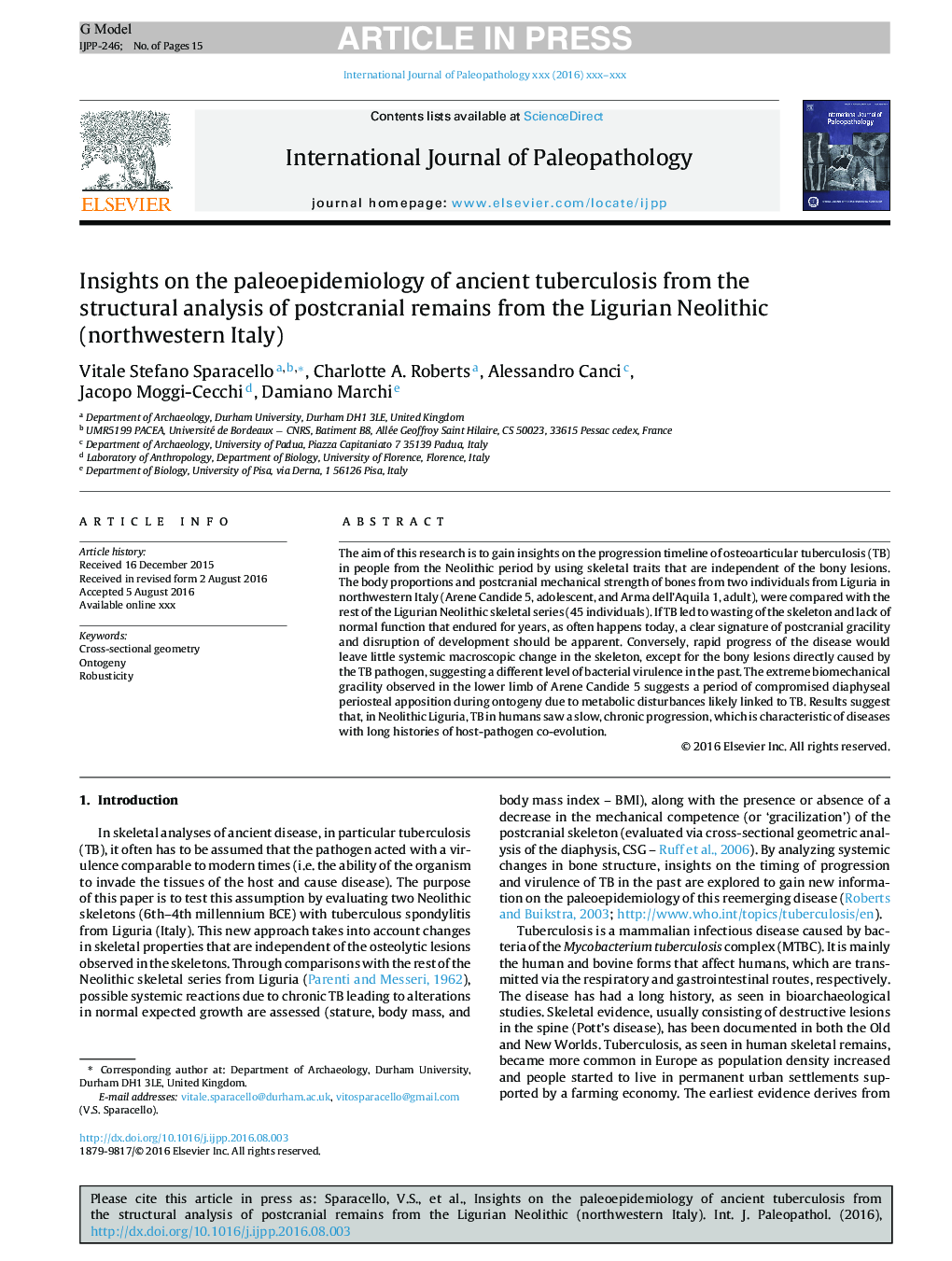| کد مقاله | کد نشریه | سال انتشار | مقاله انگلیسی | نسخه تمام متن |
|---|---|---|---|---|
| 4760572 | 1422376 | 2016 | 15 صفحه PDF | دانلود رایگان |
عنوان انگلیسی مقاله ISI
Insights on the paleoepidemiology of ancient tuberculosis from the structural analysis of postcranial remains from the Ligurian Neolithic (northwestern Italy)
ترجمه فارسی عنوان
بینش پالئوئیدیدولوژی سلول های باستانی از تجزیه و تحلیل ساختاری پانکروانیال های باقی مانده از نوسنگی لیگورایی (شمال غربی ایتالیا)
دانلود مقاله + سفارش ترجمه
دانلود مقاله ISI انگلیسی
رایگان برای ایرانیان
کلمات کلیدی
هندسه مقطعی انتگرال، رباتیک
موضوعات مرتبط
علوم زیستی و بیوفناوری
بیوشیمی، ژنتیک و زیست شناسی مولکولی
فیزیولوژی
چکیده انگلیسی
The aim of this research is to gain insights on the progression timeline of osteoarticular tuberculosis (TB) in people from the Neolithic period by using skeletal traits that are independent of the bony lesions. The body proportions and postcranial mechanical strength of bones from two individuals from Liguria in northwestern Italy (Arene Candide 5, adolescent, and Arma dell'Aquila 1, adult), were compared with the rest of the Ligurian Neolithic skeletal series (45 individuals). If TB led to wasting of the skeleton and lack of normal function that endured for years, as often happens today, a clear signature of postcranial gracility and disruption of development should be apparent. Conversely, rapid progress of the disease would leave little systemic macroscopic change in the skeleton, except for the bony lesions directly caused by the TB pathogen, suggesting a different level of bacterial virulence in the past. The extreme biomechanical gracility observed in the lower limb of Arene Candide 5 suggests a period of compromised diaphyseal periosteal apposition during ontogeny due to metabolic disturbances likely linked to TB. Results suggest that, in Neolithic Liguria, TB in humans saw a slow, chronic progression, which is characteristic of diseases with long histories of host-pathogen co-evolution.
ناشر
Database: Elsevier - ScienceDirect (ساینس دایرکت)
Journal: International Journal of Paleopathology - Volume 15, December 2016, Pages 50-64
Journal: International Journal of Paleopathology - Volume 15, December 2016, Pages 50-64
نویسندگان
Vitale Stefano Sparacello, Charlotte A. Roberts, Alessandro Canci, Jacopo Moggi-Cecchi, Damiano Marchi,
